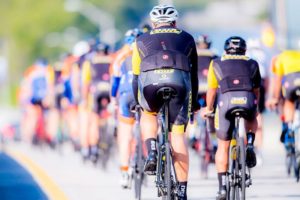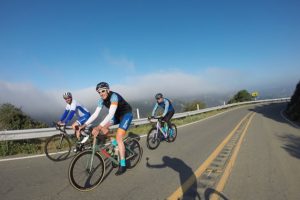Turn Your Commute Into Training
Coaches Agree Utility Cycling is a Secret Sauce
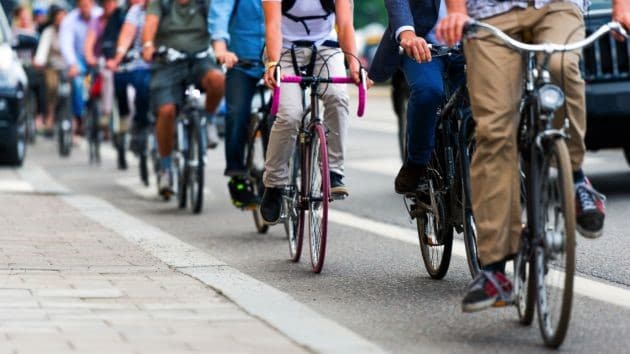
There are a lot of good coaches and personal trainers around Boston. I love to bounce stuff off Greg Oravetz at Belmont Wheelworks. He can go on and on about heart rate and wattage and rest cycles and PRE and FTP and HIIT like most coaches.
But, Oravetz has something few of the other such coaches have: a modest Wikipedia page. Few realize this quiet guy was U.S. pro road champion in 1989 and raced at the highest level in Europe and served as a lieutenant to Greg LeMond when American road cycling surged in popularity. Magazines occasionally seek him out.
During a recent exchange laced with data and charts a pearl emerged: “Most charity riders need to simply commute for a year and lose weight,” Oravetz said plainly.
With the advent of bike infrastructure in most American metro areas, bicycle commuting is increasingly comfortable. Bike commuting saves you a lot of money, burns calories, and supplements your training. Recent studies show bicycle commuters to be not just healthier but happier. While most people are stuck in traffic, a bike commuter is getting really valuable training time. And what is the most physiologically important part of this ride? The complete stops.
“I find that commuting in and out of Boston is great for criteriums and cyclo-cross because I do something like 40-70 intervals per ride accelerating away from stop lights,” said Eric Carlson, a Best Buddies Domestique, who has been riding and racing for 30 years. He also commutes year round. “And they aren’t the normal 3x3x3 intervals either. It’s complete stop to full speed and back depending on a light cycle. I average 10 minutes of stopped time during a one hour commute so somehow that’s how many lights I catch.”
While I’ve always held a curmudgeonly attitude about data-crazed novices, I’ve had to delve into training theory to better enumerate what I feel. With that I strapped on a heart rate monitor for a recent commute into and out of Boston.
Wearing a backpack and riding “Snowy” my beloved steel commuting bike, I tumbled into Boston for some meetings and errands. And a few hours later, I returned home. My route uses one of the emerging networks of rail trails and also some heavily cycled corridors through Cambridge, Somerville and Boston.
Then I looked at the data. Here is the ride INTO Boston:
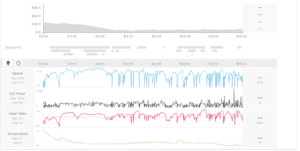
Note the bike path enables a sustained effort but once in the city the speed and heart rate start to spike and drop due to the intersections. But also note how easy I traveled given the ride is largely downhill and typically offers a tailwind. The average speed is just 13.7 mph and the max is just 23.9 mph. My average heart rate is just 112 and the max is just 141. (The wattage is estimated.)
Then I returned home, with the urban riding followed by the sustained effort on the bike path. Here is that file of my ride OUT of Boston:
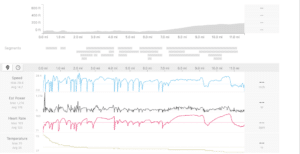
Note there is a key difference. I did that return ride in the dark with good lights and bright clothing. There is a lot less traffic so my initial miles in the city allow me to ride a touch harder and faster. Riding home I need not worry about showing up sweaty or winded. Note the average speed is 14.7 mph but the max speed, even though most of the ride ramps up in elevation, was 28.4. Of particular note are those long heart rate plateaus near the end. I strove to put myself in what coaches call the “sweet” spot of training, which is sit at about 90 percent of your sustainable effort. (for data freaks, that would be 253 watts for me or 153 bpm on my heart rate). And I held it. After a short rest between two intersections, I then ramped it up to finish with my highest heart rate of the evening at the very end. Of particular note is all those spikes in the line. Were I to pay $100 to a personal trainer, they would likely prescribe just such a plan for an hour.
But this was not a “workout”. This was simply a busy guy with a job, spouse, kids, civic duties and not a whole lot of time simply getting home. So the time most people spend that hour sitting in traffic or transit, breathing bad air, under stress, and frustrated I’m getting in my training. I did two of those sessions per weekday.
May is National Bike Month. There are loads of corporate commuter challenges out there. It’s the perfect time to start your utility cycling and get read for the Best Buddies Challenge.
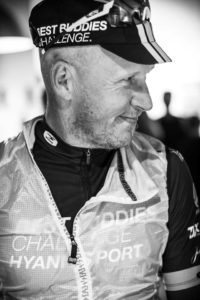 Richard Fries is the Director of Cycling Experience for the Best Buddies Challenges. With more than 40 years experience, he has been a racer, commuter, tourist, promoter, advocate, journalist and commentator on the sport and lifestyle of cycling. Having raced at the professional level both in America and Europe, Fries is well known as a race announcer having called countless USA Cycling National Championships, World Cups, and UCI World Championships. But he is also a tireless advocate having recently served as the executive director of MassBike. You can follow him on Strava to learn more.
Richard Fries is the Director of Cycling Experience for the Best Buddies Challenges. With more than 40 years experience, he has been a racer, commuter, tourist, promoter, advocate, journalist and commentator on the sport and lifestyle of cycling. Having raced at the professional level both in America and Europe, Fries is well known as a race announcer having called countless USA Cycling National Championships, World Cups, and UCI World Championships. But he is also a tireless advocate having recently served as the executive director of MassBike. You can follow him on Strava to learn more.

